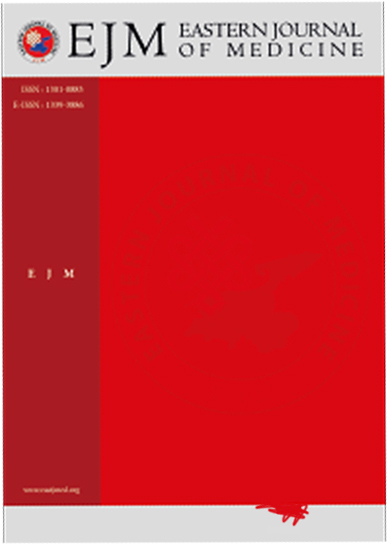Evaluation of the Relationship Between the Degree of Coronary Collateral Circulation and Levels of Androgens in Male Patients with Coronary Artery Disease
Aslan Erdoğan1, Ender Özgün Çakmak2, AHMET KARADUMAN3, Ahmet Güler1, Cevat Kirma31Department of Cardiology,Cam & Sakura City Hospital2Department of Cardiology, Acıbadem Maslak, Hospital
3Department of Cardiology, Kartal Kosuyolu Training and Research Hospital, Istanbul,
INTRODUCTION: Coronary collateral circulation (CCC) comprises vascular pathways that activate in severe coronary stenosis to preserve perfusion. This study investigates the relationship between CCC development and male sex steroids.
METHODS: A retrospective analysis was performed on 149 male patients with ≥95% stenosis in epicardial coronary arteries and 29 with normal coronaries, identified via coronary angiography between January 2017 and December 2023. The cohort included 29 control patients, 99 with well collateral flow (WCF), and 50 with poor collateral flow (PCF). Serum levels of total testosterone, free testosterone, dehydroepiandrosterone sulfate (DHEA-S), and sex hormone-binding globulin (SHBG) were measured. Logistic regression was used to analyze the relationship between sex steroid levels and collateral development.
RESULTS: The PCF group exhibited higher rates of diabetes mellitus (p=0.01) and smoking (p<0.001). The WCF group had significantly higher levels of total testosterone (350.6 ± 78.5 vs. 273.8 ± 59.9 ng/dL, p<0.001), free testosterone (12.1 ± 3.3 vs. 7.2 ± 2.0 pg/mL, p<0.001), DHEA-S (180.5 ± 69.5 vs. 131.9 ± 87.9 μg/dL, p<0.005), and SHBG (35.3 ± 11.0 vs. 24.8 ± 6.9 nmol/L, p<0.005). Multiple logistic regression revealed that DM [OR = 1.923, 95% CI (1.0414.092), p = 0.012] directly predicted PCF, whereas free testosterone [OR = 0.689, 95% CI (0.5570.851), p < 0.001] and SHBG [OR = 0.903, 95% CI (0.8490.960), p = 0.001] were inversly predictors.
DISCUSSION AND CONCLUSION: The study highlights the important role of sex steroids in coronary collateral development, with free testosterone and SHBG as key predictors of CCC levels in men with coronary occlusion.
Manuscript Language: English














